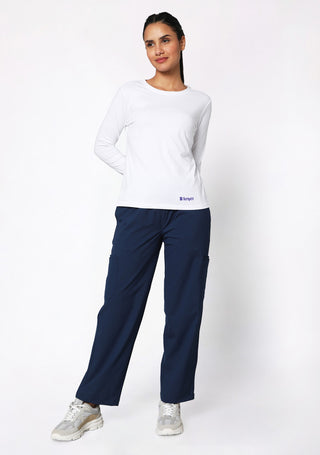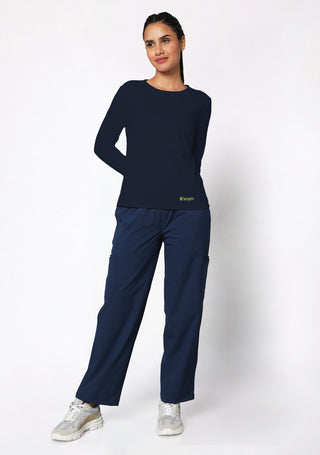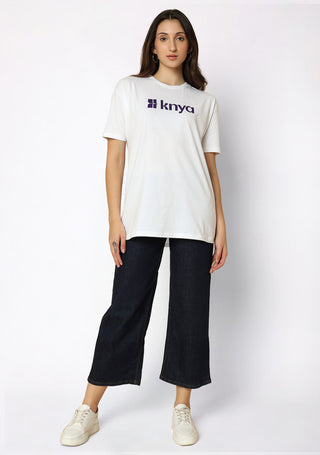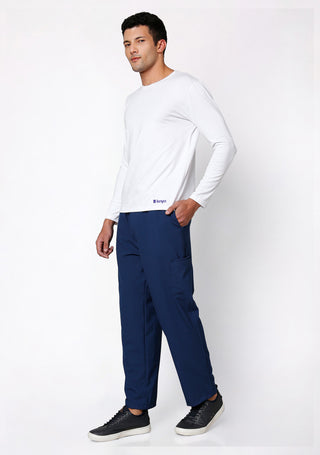When you picture a nurse, the image that usually comes to mind is someone wearing scrubs. But did you know that nurse uniforms are not the same across all hospital departments? In reality, the uniforms vary based on the specialty, the nature of care provided, and the environment in which nurses work. These variations are not just about color or style—they are carefully designed to balance comfort, safety, hygiene, and functionality.
From the bright, cheerful patterns of pediatric nurse uniforms to the sterile, high-performance scrubs worn in operating rooms, each type of uniform serves a unique purpose. Brands like Knya have brought modern innovations to medical apparel, ensuring that scrubs, underscrubs, and lab coats not only look professional but also support the demands of long hospital shifts.
In this article, let’s explore the many ways hospital nurse uniforms differ across specialties and why these differences matter.
1. General Nurse Uniforms
General nurses work across multiple departments and perform varied duties, from direct patient care to administrative tasks. Their uniforms are usually standard scrubs in colors like blue, green, or purple.
- Fabric: Typically a polyester-cotton blend for durability and comfort.
- Design: Loose-fitting for easy movement.
- Purpose: Professional appearance, easy cleaning, and comfort during long shifts.
Knya scrubs are designed with breathable fabric blends that can withstand repeated washing while maintaining comfort.
2. Pediatric Nurse Uniforms
Pediatric nurses work with children, so their uniforms are intentionally designed to be less intimidating.
- Colors & Patterns: Bright, playful designs featuring cartoons or animals.
- Fabric: Soft and skin-friendly for close interaction with kids.
- Function: Creates a welcoming environment, helping reduce anxiety in young patients.
A cheerful uniform can make a big difference in gaining a child’s trust, which is why pediatric nurses often stand out in more colorful attire compared to their colleagues.
Click here to explore comfortable lab coats and discover our complete collection of comfortable and stylish medical apparel
3. Surgical Nurse Uniforms
Surgical nurses operate in sterile environments, so their uniforms must meet strict hygiene standards.
- Colors: Usually green or blue to reduce eye strain under bright surgical lights.
- Fabric: High-grade, often disposable to prevent contamination.
- Additional Gear: Sterile gowns, gloves, masks, hair covers, and sometimes face shields.
- Purpose: Maintaining sterility during operations.
Knya surgical scrubs are tailored for comfort under layered protective gear while ensuring easy sterilization.
4. ICU Nurse Uniforms
ICU nurses handle critical patients in high-pressure situations. Their uniforms must be durable, flexible, and practical.
- Fabric: Breathable and stretchable for unrestricted movement.
- Design: Multiple pockets to store tools like scissors, pens, and monitors.
- Colors: Often darker shades to hide stains.
These uniforms are designed to withstand heavy-duty tasks while allowing ease of motion in emergency care.
5. Neonatal Nurse Uniforms
Neonatal nurses care for premature and sick newborns, so hygiene and comfort are crucial.
- Colors: Pastel or soft shades to create a calming environment.
- Fabric: Hypoallergenic and soft for sensitive infant skin.
- Purpose: Minimizing irritation for both infants and parents while ensuring professional appearance.
Knya scrubs in soothing tones are ideal for neonatal units, where calmness and hygiene matter most.
6. Emergency Room (ER) Nurse Uniforms
ER nurses work in fast-paced, unpredictable conditions where durability is essential.
- Fabric: Stain-resistant and easy to disinfect.
- Colors: Generally darker to conceal blood or fluid stains.
- Design: Functional scrubs with extra pockets for medical tools.
- Purpose: Quick mobility and resilience in emergency situations.
Since ER nurses frequently encounter trauma cases, their uniforms prioritize toughness over appearance.
7. Labor and Delivery (L&D) Nurse Uniforms
L&D nurses assist mothers during childbirth, requiring comfort and practicality in their uniforms.
- Fabric: Soft, stretchable, and breathable.
- Colors: Neutral or calming shades, sometimes feminine designs.
- Features: Extra pockets for charts, gloves, and essential tools.
-
Purpose: Comfort during physically demanding shifts and creating a reassuring environment.
A functional yet welcoming uniform helps support mothers through labor with confidence.
8. Oncology Nurse Uniforms
Oncology nurses support patients undergoing cancer treatments. Their uniforms strike a balance between professionalism and compassion.
- Colors: Muted or calming tones, sometimes with positive motifs.
- Fabric: Soft materials for comfort during long hours.
- Additional Gear: Protective equipment for handling chemotherapy drugs.
- Purpose: Uplifting patients while maintaining safety.
Uniforms in oncology are often designed to bring warmth and encouragement in emotionally heavy situations.
Ready to explore our amazing surgical caps collection? Browse the best here
9. Orthopedic Nurse Uniforms
Orthopedic nurses assist patients with fractures, joint surgeries, and rehabilitation. Their uniforms must support physical tasks.
- Fabric: Strong and flexible for constant bending, lifting, and moving.
- Design: Reinforced stitching and ample storage.
- Purpose: Functionality for active roles in rehabilitation and patient handling.
Knya orthopedic scrubs combine comfort with resilience, making them ideal for physically intensive care.
10. Psychiatric Nurse Uniforms
Psychiatric nurses focus on building trust with patients dealing with mental health issues. Their uniforms are simple and calming.
- Colors: Soft, muted shades to reduce anxiety.
- Design: Non-restrictive cuts for comfort during patient interactions.
- Purpose: Creating a safe, approachable, and supportive environment.
In psychiatric care, uniforms are as much about psychology as practicality.
Why Nurse Uniforms Differ Across Specialties
The variation in nurse uniforms is not just about style. Each specialty requires specific functionality:
- Hygiene: Preventing contamination in surgical and neonatal units.
- Comfort: Supporting long hours in ICU, ER, and L&D departments.
- Psychology: Calming colors and designs for pediatric and psychiatric care.
- Durability: Strong fabrics for orthopedic and emergency roles.
Brands like Knya understand these unique requirements, offering scrubs, underscrubs, and lab coats tailored to every specialty. Whether it’s scrubs for men, scrubs for women, or underscrubs, the right uniform empowers nurses to perform their roles effectively while feeling comfortable and professional.
Conclusion
Hospital nurse uniforms are much more than just scrubs—they are specialized tools designed to meet the unique demands of each nursing role. From bright patterns that comfort children to sterile surgical attire that prevents infections, every detail is thoughtfully designed to enhance performance, safety, and patient experience.
As hospitals and healthcare institutions continue to evolve, brands like Knya are leading the way in designing medical apparel that blends comfort, durability, and style. Choosing the right nurse uniform isn’t just about appearance; it’s about ensuring that every nurse is fully supported in their critical role.












